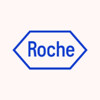
A Study of Monthly Subcutaneous Continuous Erythropoietin Receptor Activator (CERA) in Predialysis...
AnemiaThis single arm study will assess the long term maintenance of hemoglobin (Hb) levels, safety and tolerability of once monthly subcutaneous methoxy polyethylene glycol-epoetin beta (CERA) in predialysis participants with chronic renal anemia. Participants currently receiving subcutaneous darbopoetin alfa maintenance treatment will receive subcutaneous methoxy polyethylene glycol-epoetin beta for a maximum of 32 weeks at a starting dose of 120, 200 or 360 micrograms every 4 weeks according to the dose of darbopoetin alfa administered in Week -1. Subsequent doses will be adjusted to maintain hemoglobin levels within the target range of 10 to 12 grams per deciliter (g/dL).

Evaluation of the Efficacy of Different Strategies to Treat Anemia in Mexican Children
AnemiaAnemia continues to be a major public health problem in many regions of the world and it is still not clear which strategy is more effective in children population in terms of adherence and efficacy. The objective was to evaluate the efficacy and acceptance of several strategies that have been recently recommended to treat anemia on anemic children (6 to 43 mo):Iron supplement, iron+folic acid supplement, a multiple micronutrients supplement a micronutrient fortified complementary food in the form of porridge powder or zinc+iron+ascorbic acid fortified water.

Oral and Intravenous Iron in Patients Postoperative Cardiovascular Surgery Under Extracorporeal...
AnaemiaAnaemia is a common postoperative problem of cardiovascular surgery after cardiopulmonary bypass (CPB). Because of this the need for hemoderived blood transfusions is high. The purpose of this study was to compare the clinical efficacy of intravenous and oral iron in anaemia and the impact of the iron on the transfusion rate in postoperative cardiovascular surgery under extracorporeal circulation.

Rituximab to Treat Moderate Aplastic Anemia, Pure Red Cell Aplasia, or Diamond Blackfan Anemia
AnemiaAplastic4 moreThis study will test whether the immune-suppressing drug rituximab can increase blood counts and reduce the need for transfusions in patients with moderate aplastic anemia, pure red cell aplasia, or Diamond Blackfan anemia. These are rare and serious blood disorders in which the immune system turns against bone marrow cells, causing the bone marrow to stop producing red blood cells in patients with pure red cell aplasia and Diamond Blackfan anemia, and red blood cells, white blood cells and platelets in patients with aplastic anemia. Rituximab is a laboratory-made monoclonal antibody that recognizes and destroys white blood cells called lymphocytes that are responsible for destroying bone marrow cells in these diseases. The drug is currently approved by the Food and Drug Administration for treating patients with B-cell non-Hodgkin lymphoma, a disease of white blood cells.

Ferumoxytol Versus Oral Iron in the Treatment of Anemia in Non-Dialysis Dependent Chronic Kidney...
AnemiaThe study will evaluate the safety and efficacy of a new intravenously administered iron drug to treat anemia in patients with chronic kidney disease who are not on dialysis.

Pharmacokinetic Study of Intravenous Iron Sucrose in Adolescents on Hemodialysis or Peritoneal Dialysis...
AnemiaThis is an open-label, multicenter pharmacokinetic study of HD od PD patients receiving erythropoietin. Patients were administered 100mg of iron sucrose undiluted by slow IV push over 5 minutes. Patients underwent serial blood draws and were subsequently followed for 7 days for safety endpoints.

Hydroxyurea to Prevent Stroke in Children With Sickle Cell Anemia and Elevated TCD Flow Velocity...
StrokeThe purpose of this study is to assess prospectively the efficacy of hydroxyurea therapy in the setting of cerebrovascular disease, manifest as conditional or abnormal transcranial doppler ultrasonography (TCD) flow velocities, in children with sickle cell anemia (SCA). TCD is used to measure flow velocity in intracranial arteries as a marker of increased stroke risk in children with SCA. The primary objective of this protocol is to determine whether hydroxyurea reduces elevated TCD velocity.

Study of High Dose Cyclophosphamide in Patients With Severe Aplastic Anemia and Paroxysmal Nocturnal...
Aplastic AnemiaParoxysmal Hemoglobinuria1 moreOBJECTIVES: I. Confirm the efficacy demonstrated in a pilot study using high dose cyclophosphamide in patients with severe aplastic anemia. II. Determine whether the addition of filgrastim (G-CSF) to high dose cyclophosphamide shortens the time to recovery in these patients. III. Determine whether this regimen is efficacious in treating paroxysmal nocturnal hemoglobinuria.

Phase II Study of Bone Marrow Transplantation Using Related Donors in Patients With Aplastic Anemia...
Aplastic AnemiaOBJECTIVES: I. Evaluate the efficacy of related, HLA-identical bone marrow transplantation following cyclophosphamide (CTX) and antithymocyte globulin in patients with aplastic anemia. II. Evaluate the efficacy of related, HLA-nonidentical bone marrow transplantation following CTX and total-body irradiation/total-lymphoid irradiation in patients with aplastic anemia.

Tipifarnib in Treating Patients With Myelodysplastic Syndromes
Chronic Myelomonocytic Leukemiade Novo Myelodysplastic Syndromes6 moreThis phase I trial studies the side effects and best dose of tipifarnib in treating patients with myelodysplastic syndromes. Tipifarnib may stop the growth of cancer cells by blocking some of the enzymes needed for cell growth.
